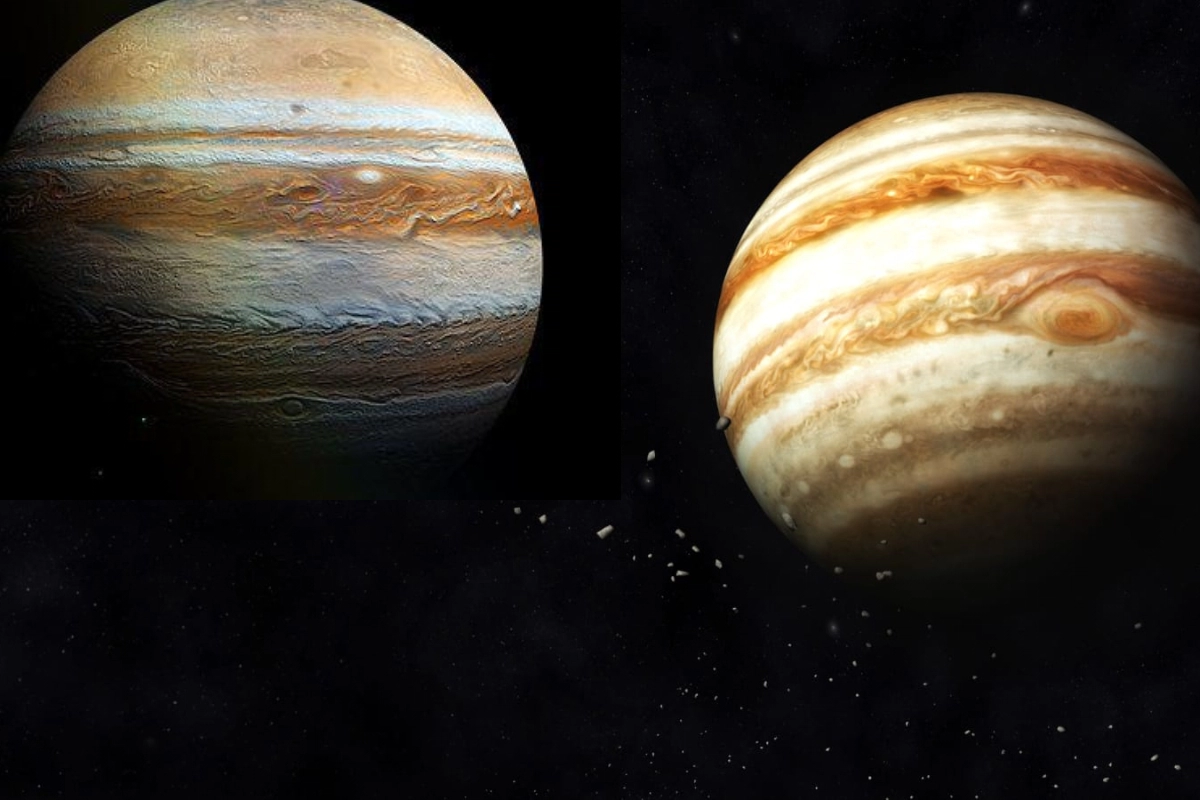Jupiter: Another celestial occurrence is expected to astound stargazers years after the big conjunction, when Jupiter and Saturn lined up exactly in the sky above Earth. Tonight, as Jupiter reaches planetary opposition, it will be at its closest point to Earth in 59 years. Despite the fact that Jupiter’s planetary opposition occurs every 13 months, this closeness to Earth is unusual.
On a cosmic scale, Jupiter will only be 59,06,29,248 kilometres away from Earth when it is at its closest. It was this close before back in 1963. This incredibly unusual occurrence won’t occur again for roughly 107 years, in 2129. That won’t happen while any of us are here, therefore tonight’s opposition is crucial.
At its closest, Jupiter will be just over 59 billion kilometres from Earth; at its farthest, it will be 96,56,06,400 kilometres. The largest planet in the solar system will look larger and brighter in the heavens above Earth as Jupiter gets closer.
A planetary opposition is a rare occurrence that occurs when an astronomical object rises in the east and sets in the west, putting the object and the Sun on opposite sides of the Earth, according to Nasa.
Also Read: Viral Video: Sister Chops Off Her Hair On Brother’s Grave Who Was Killed In Iran Protest. Watch Here
Jupiter will be directly opposite to the sun this time
The planet, which takes more than 11 years to orbit the Sun once, will be directly opposite the Sun during this time, making it one of the brightest celestial objects as seen from Earth.
“Jupiter looks exceptionally brilliant in the night sky when it is in opposition to Earth, which occurs every 399 days, or nearly every 13 months and 4 days. This year, on September 27 at 1:30 a.m. IST, Jupiter will be in opposition. The perihelion point, which is when it is closest to the Sun, will occur on January 21, 2023 “M. P. Birla Institute of Fundamental Research’s Scientific Officer Shilpi Gupta said to indiatoday.in.
Jupiter will be visible in the constellation Pisces at a brightness of -2.9 and a diameter of 49.9 arcsec, she continued. Due to its tremendous brightness, it will be visible to the human eye and be visible from all over the planet.
Since October 8, 1963, it hasn’t been this near; it won’t be again until October 7, 2129
“In actuality, Jupiter’s brightness won’t peak for 59 years. Since October 8, 1963, it hasn’t been this near; it won’t be again until October 7, 2129. Therefore, it is an event that all aficionados must attend “Added Shilpi Gupta.
Also Read: Mukul Rohatgi Declines Government’s Proposal to Return as Attorney General
For astronomers and scientists searching for evidence of extraterrestrial life, Jupiter has long been a source of fascination. With 53 identified moons, the planet resembles a little solar system in itself, and its powerful gravitational pull has prevented many asteroid strikes on Earth.
A mission to investigate Europa, one of Jupiter’s enormous moons, is already being prepared by NASA. Europa is thought to have more water than the oceans of Earth and may even be livable. In the upcoming years, the Europa Clipper mission will be sent into space to investigate this unusual extraterrestrial world.
Keep watching our YouTube Channel ‘DNP INDIA’. Also, please subscribe and follow us on FACEBOOK, INSTAGRAM, and TWITTER












